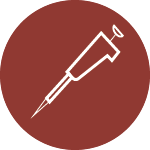Sample Preparation
Home » Resources Library » Sample Preparation
General Tips for Sample Preparation
It’s pretty easy to find a lot of great protocols for sample preparation. Our goal is to help you understand these sample preparation protocols in order to get good quality data. Watch the training videos to understand:
- Factors within the staining protocol affect data quality:
- Staining time, temperature, volume, cell number, antibody amount
- Washing
- Buffers and fixatives
- Pipetting error
- Blocking and dead cell discrimination
- Other considerations include:
- Digestion of tissue into single cells
- Gating controls for data analysis
- Staining controls for compensation and instrument setup
- Determining the appropriate number of cells required for the experiment
- Maintaining consistency in order to achieve reproducible results
Flow Basics 2.0 is a 5-part training course that covers the practical steps for designing and executing a flow cytometry experiment. The first two parts cover a basic cell staining protocol and how to optimize the protocol. The full course can be found within the Resources Library.
Cell Sorting Information
Other Useful Information
Antibody Fixation Consideration (Thermofisher)
List of popular antibody clones and how epitopes are impacted by fixation.
Antibody Fixation Consideration (BioLegend)
List of popular antibody clones and how epitopes are impacted by fixation.
Phospho-Buffer Consideration (ThermoFisher)
List of popular antibody clones and how epitopes are impacted by Phospho-buffers.
PhosphoFlow Buffer Compatibility (BD Biosciences)
Compatibility of various antibody clones in multiple PhosphoFlow buffers.
Enzyme Explorer for Tissue Dissociation (Millipore Sigma)
Guidance for selecting tissue digestion enzymes.
Essential Markers for Phenotyping (BioLegend)
Essential markers for identifying immune cell populations in human and mouse.






